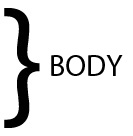How to write an Adjustment Letter
How to write an Adjustment Letter?
Before you know about writing adjustment letters, it is important to know their value. Claim and adjustment letter are important because they inform the firms of their shortcomings. Knowledge of claims and complains enables prevention of further such incidents. The writer and the vendor gain a valuable experience in customer care satisfaction. Handling genuine complaints and claims ensures that laws are being adhered to and its saves the efforts of both the sides. Giving the client their dues share ensures establishment of justice, protects the citizens rights. When this practice becomes a norm it barricades corrupt practices. When a claim or complaint is addressed in a proper manner, the client becomes your advertiser or brand ambassador. His ‘Word of Mouth’ about your response will be acknowledged many times during the course of his social life. The company also wins a loyal customer who wouldn’t shun at the name of your firm.
Tips for writing Adjustment Letter
- Organise the material – A must essential before one starts to write. Collect all the relevant documents, previous correspondence, company policy, record of previous such cases and other required material. Organizing these will establish a framework and order in which to present information in the most appropriate manner. The framework of your letter should be in sequential order. This makes it easy, not only for you but also for the client to understand the matter in the easiest manner. Make a check list and see what you are missing. Include these as well.
- Drafting – Drafting is the rough copy of your letter. It is open to mistakes and editing. Since you have organised the material, you just need to use them in the most effective manner making sure that you haven’t left out any important aspect of the letter. Use the information of the outline and divide into short paragraphs. Go through the contents again and refer them with the outline and your objective. The opening and conclusion are of the utmost importance. The conclusion sums up all in brief with a positive impression. Since you will be mostly editing these on a PC, it is easy as you don’t need to waste paper.
- Admit your Mistake and make Prompt Rectification – Once it has been established that your client is actually a victim, initiate an instant rectification process. Apologise and regret in the most responsible way using words which will soothe the irritation or anger of the reader. Words like ‘Mistakes do happen but we always have a solution’, ‘Your satisfaction is of the utmost concern to us’, ‘It is good to know that you have brought this matter to our light, we will ensure that these incidents never happen’ etc. Give the facts regarding the defective product or service. Don’t use excuses or long explanations about the incident. Explain what is being done to rectify the problem with details like discount, refund, dates, times, places etc. of the action initiated. This approach reiterates the consumer’s interest in your organisation and maintains a good business relationship.
- Maintain a Positive Tone – Adjustment letter with an adjusted tone towards positive attitude works both ways. The client is satisfied and the vendor is also satisfied. Always begin by sympathising your client, establishing a positive tone. Make them feel understood. Only then you move to the next step, which is to break the news, in favour or against. Even if the client is at fault, it is necessary that you don’t provoke the customer. Never accuse them of the wrongdoing or offer an adjustment with resentment. This gives a negative publicity to your form and will end up producing negative sentiments for you and your company. Never reply in a negative tone even when you are aware that you aren’t at fault. Your personal emotions shouldn’t compromise the image of the company you work for. If the correspondent uses negative language you don’t need to reciprocate.
- Use Diplomatic Language – It comes across many times that clients are not right. Here you have to be diplomatic so that complainer or claimer is satisfied with your reasoning or logic. When compensation, refund etc. is not justifiable, you cannot be blunt; you have to be tactful in approach. Deny the request in the most pleasing manner. Express your concern over the issue and appreciate their concern over the matter. Mention the issue at hand and how you understand what happened. Bring forth all the policies and regulations and translate them into layman’s language. This is to simplify and make your refusal fair, justified and acceptable. When this is done you can politely point out that the request cannot be accepted. However, there are certain cases where the organisation is at fault even when it may appear that the customer is at fault. So you have to maintain this diplomacy so that there are no further grounds on which the customer can penalise you through court of law. End the letter in such a manner that there is room for apology and rectification. You can do this by comforting and convincing the reader that you understand their need. Give them a friendly advice and end the letter on a good note so that the client feels that he has gained something. But never offer anything that cannot be done. You can write ‘Looking forward towards a mutually fruitful association’ etc. in mind.
- Politeness – Politeness is often stressed in most type of letters. This is because it is a virtue which exudes a positive vibes, especially in a conflict situation. It also reasserts the dignity of the client. It is a basic courtesy and can make all the difference. Adjustment letters are meant to satisfy the client even when he isn’t right in his actions. Choose your words carefully, so that there is no room for offence. Use the title or name of the person in focus. You must be handling plenty of such letters but that doesn’t mean you can take a few for granted. Politeness in a situation where you are fault becomes even more important. Being the guilty party; politeness is not only a necessity but it is also customary to maintain a healthy business relationship with the client.
- Personal Touch – Personal touch doesn’t mean getting intimate with the client. It means making the client comfortable and giving him the respect. To do this, address your client with his name. This is a sign of recognition of the client’s individuality; a person is known in the society by his name and the name becomes his identity. By addressing to his identity, you reaffirm his importance in the same way as is done in the society. You can also use his title in along with his name to this effect. You can use any relevant line of humour to ease the discord and delight the client towards a positive approach.
- Use a Letter head - As a rule in terms of official and business letters, Claim Adjustment Letters should always have a company letter head on the Top Margin of the page, left, right or middle. This establishes the authority of the letter and increases the importance of the document. A letter head signifies that the client is dealing with a responsible authority. It asserts his belief in the company. Letterhead also remains embedded in one’s mind whenever the situation has resulted in the favour of the client. The letterhead becomes a symbol of fairness and the company gains a loyal customer and an unpaid ambassador.
- Proofreading - Check your grammar, spellings, sentence formation and structure. Check the accuracy, clarity and a sense of completeness of your paragraphs. Keep your tone consistent, avoids abstract terms which are generally not understood by all like slang, clichés or phrases. Remove any confusing items. If typed on PC use professional fonts like Times New Roman or Arial and maintain the same. Also keep in mind the legibility of words; neither too small nor too big. Appropriate dates, signature and complimentary closure should not be forgotten.
Adjustment Letter Formats
Most letters of adjustment have 2 to 3 formats. Depending upon the practice in one’s region on should adhere to it. Below we have provided 2 Formats of writing an adjustment letter. There isn’t much difference in the body of the letter. The difference in the format is placement of Headers, Date or Letter heads.
Adjustment Letter Format 1
|
Your Name
Reference or Subject Dear Recipient (Salutation) First Paragraph - Acknowledgment of the complaint along with apology Third Paragraph - Complaint or Claims rectification or resolution
Subscription - Thanking you, yours sincerely etc. |
Adjustment Letter Format 2
|
Company Letterhead
Reference or Subject Dear Recipient (Salutation) First Paragraph - Acknowledgment of the complaint along with apology Third Paragraph - Complaint or Claims rectification or resolution
Subscription - Thanking you, yours sincerely etc. Signature Your Official Title or Post Your Address and/or Contact No. ENCL (optional) stands for ‘Enclosure’ and refers to any attached documents |



